
Speaker's Biographies & Abstracts
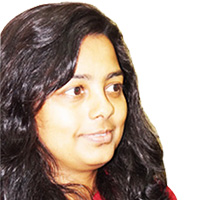
As the Director of Commercial Research and Policy Advocacy, Anamika is responsible for providing leadership and further develop the business of the division. She has 16 years of extensive experience across various functions and has handled various profiles like editorial, product management and Industry Analytics within Geospatial Media & Communications.
She holds an M.Phil in Geography from Delhi School of Economics, Delhi University.

Dr Anne Kemp is an Atkins Fellow, and Technical Director for BIM. Anne is chair of the UK BIM Alliance, driving leadership for implementation of BIM Level 2 across the UK private sector. Anne is currently Chair of BuildingSmart UK, and served two years as Chair for AGI between 2012 and 2014. She is Convenor for ISO19650 – which is lifting the BS/PAS1192 suite (on which the UK Government's level 2 BIM mandate is based) to ISO in parallel with CEN. Following her recent MSc research, Anne continues to develop thought leadership on how to enable sustained collaborative working across the industry.
Abstract
The coming of age of geoBIM – a tipping point?
This keynote will discuss the relevance in the UK of GeoBIM – for BIM Level 2 and the UK BIM Alliance, and for BIM Level 3, Digital Built Britain, Building Smart and OGC. I will look at the wider experience of a geoBIM approach.
I will challenge just how big the Geo-BIM divide is. And ask whether it is technical or cultural.

Bart De Lathouwer is responsible for planning and managing interoperability initiatives such as testbeds, pilots and interoperability experiments with an emphasis on activities in Europe. Since 2001, Mr. De Lathouwer has worked first as European liaison to the geospatial division of Autodesk and later as Autodesk's Product Manager for Server Technologies. In this role, he also served as member company representative to the OGC. As a company representative, he started the OGC CAD-GIS Interoperability Working Group (which evolved into the OGC 3DIM Domain Working Group) and managed the development of a core data access technology FDO (Feature Data Object) that later went open source in OSGeo. After returning to Europe, he worked as a geospatial expert for both private and government organizations focused on interoperability. Previously, Mr. De Lathouwer was technical project manager at electric and water utilities as well as telecommunication companies. He holds a BS in Computer Science from the Karel de Grote-Hogeschool.

Bart De Lathouwer is responsible for planning and managing interoperability initiatives such as testbeds, pilots and interoperability experiments with an emphasis on activities in Europe. Since 2001, Mr. De Lathouwer has worked first as European liaison to the geospatial division of Autodesk and later as Autodesk's Product Manager for Server Technologies. In this role, he also served as member company representative to the OGC. As a company representative, he started the OGC CAD-GIS Interoperability Working Group (which evolved into the OGC 3DIM Domain Working Group) and managed the development of a core data access technology FDO (Feature Data Object) that later went open source in OSGeo. After returning to Europe, he worked as a geospatial expert for both private and government organizations focused on interoperability. Previously, Mr. De Lathouwer was technical project manager at electric and water utilities as well as telecommunication companies. He holds a BS in Computer Science from the Karel de Grote-Hogeschool.
AbstractThe Future City Pilot Phase 1 (FCP1) is an OGC Interoperability Program initiative, in collaboration with bSI. This pilot existed within the context of the Geospatial and Built Environment, seeking to understand the 'state of play' of current interoperability arrangements. Multiple scenarios were setup, based on real-world requirements put forward by the pilot sponsors (Sant Cugat del Vallès [Barcelona], Spain; Ordnance Survey Great Britain; VirtualCitySYSTEMS GmbH Berlin; and Institut National de l'Information Géographique et Forestière [IGN], France). The scenario focused on the interoperability between IFC and CityGML, as well as 'dynamising' CityGML using sensor readings and city flooding. In this session, Bart De Lathouwer will present the results of FCP1, through demonstrations of the various scenarios along with in-depth analysis of the successes and issues encountered in each. You will learn from the pilot participants (University of Munich, University of Melbourne, and Remote Sensing Solutions, San Diego) about the architectures, the tools used, and how they solved specific problems.The results of the pilot are fed into the standards programs of the OGC and bSI (through public Engineering Reports and in-depth debriefings) with the dual purpose of promoting the use of standards while also accelerating the process of creating and improving them
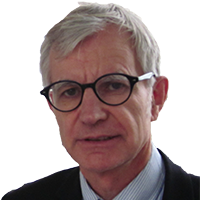
Architecture training and Graduate in CAD development With Egis, 25 years of experience of project management in large Infrastructure projects in Europe and Middle East ( Road and Rail) and Software development of CAD and GIS. Since 2013, Director of the Egis project : Bim by egis Participating to the research project COMMUNIC (ANR and Advancity), from 2007 to 2011. Leading and launching a new research project MINnD sponsored by the MEDDE (French ministry of Environment and sustainable development) to develop Infrastructure Information modelling. Representative of SYNTEC ingénièrie in the French project of Data Dictionary PPBIM, with Afnor. Chairman of the Scientific and Technical Committee of MediaConstruct ( French chapter of BuildingSmart International. In charge of the Project management Module for the BIM professional Master in the Ecole Nationale des Ponts et Chaussées (ENPC-Paris) Technical advisor of the MEDDE in CEDR S3 Technical advisor of the MEDDE in the European BIM group Chairman of the Infrastructure Room, for Building Smart International, Chairman of the Bim task force in EFCA
Abstract
IFC extension for infrastructure and GIS
The presentation will introduce the agenda for the IFC extension to infrastructure. With IfC 5 for the Horizon 2020, it could possible to offer to the software vendors, a large IFC schema based on conceptual model of objects and semantics. The scope will cover the roads, the rail, including systems, the bridges, and may be tunnels.
The delivery of IFC5 to the international standard organisation will include not only an information exchange format, but also a data dictionary of properties and objects which will provide the option to operate with products catalog and with other international standards.
The IFC extension to Infrastructures means an extension of IFC to the territories , to the environment issues to the operation life cycle. The Issue for interoperability will have to be extended to the various standards. It's one of the condition for solving the internet for objects: to be able to use the same data dictionary, and to merge the knowledge on semantics, to be able to use the same objects for various services coming from bim systems, or GIS with the appropriate information and metadata.
BIM level 3 objectives, for an end user point of view, are very clear: the same data must be operated through different systems; The scope to be covered by organisation like bSI, OGC, or UIC (railway organisation) has not to be considered as a scale issue, but as services delivered to the end users.

Daan Alsem graduated in 1983 as a civil engineer (MSc) at the faculty of Civil Engineering at the TU Delft. From 1999 Daan has been working at Royal HaskoningDHV as consultant / projectmanager in the field of infrastructure, using BIM in practice. Daan was projectmanager for the development of the OTL Object Type Library for the Province of Gelderland for the project Traverse Dieren using the open standard COINS with a so called BIM-annex Information Delivery Specification, which is now operational. Daan was co-author of the publication "The management of information over the life-cycle of a construction project using open-standard BIM" together with Peter Willems of TNO. From 2016 he is member of the CEN/TF442 "BIM" as a representative for the Dutch NL-Ingenieurs organisation and involved in the CEDR as a projectleader fot the Development of an European Road OTL and open exchange standard.
Abstract
Exchange information Challenges in the chain as a contractor
For the project Knooppunt Joure the Design and Construct contractor is responsible for the delivery of all asset information to the client in open-standard BIM. The Object-Type-Library of the client (Rijkswaterstaat) is used to structure all asset information. In this OTL the future asset manager defined all required asset information for the different types of objects (assets). As a contractor we model all assets in the project according the structure and with properties defined by the client in this OTL. Important part of the work is to transform our (CAD based) design to GIS using open-standard GML. The client requests GML geometry for most of the object-types in the project. These GML's files are published in an online GIS viewer that is linked to our database system containing all asset information (properties) and is linked to a Document Management System. All this linked information (incl. GML) is shared with the client in open-standard BIM files using the COINS standard.

Male. BSc in Physics (UAB) specialized in Optics and Master in Environmental Engineering (UPC). After 10 years of experience as Sales Manager and CEO at ATIPIC TEN afterwards, he started as a Business Developer of R&D projects inside CETEMMSA Technology Centre. Now he is Deputy Business Development and Innovation Manager at IDP.
Abstract
Development of CIM through BIM implementation in Civil Works - INTERMODEL EU
The goal is to expand BIM methodology to a district and/or City level in order to provide City town halls and administrations with a much further developed tool to control aspects such as the energy production of its assets as well as the energy demand of both public buildings, infrastructures as well as residential and commercial buildings. So, in the future, all buildings' BIM models will be able to export their energy demand and/or production to a broader platform, the CIM model of the entire town/city. In addition, if all the energy networks are geo-localised through google maps, LandXML, etc. in this CIM model etc. and monitored through the implementation of sensors, a faster and efficient control can be carried out. Furthermore, virtual simulations of network and/or unit improvements could be simulated through the use of simulation software programs in order to assess new technologies, network systems, etc. before implementing them, thus saving heavy future Capex.
On the other hand, having all roads/streets modelled within the CIM model, cities' overall mobility can be studied in order to assess GHG and CO2 gas reduction actions and to improve, above all, public transport services. Actual transport routes and vehicles can be studied and new ones may be simulated in order to improve the latter. Finally, having all the streets, buildings and so on geo-localised in the CIM platform will set the ground for a huge number of benefits, such as a better study and planning of construction works and their impact on society, mobility, etc. as well as many social apps.

Fred Kloet has studied facility management and has always invested in the development of this profession. He has served as board member on national and European associations and national representative in EN standards development. He has been an editor in chief and has written many articles on FM in many international magazines. After having worked in Brussels he founded the European Centre for FM, Villa FM, and lived and worked in Italy for 9 years. Since 2012 Fred is back in NL. He founded PROCOS Nederland BV and is focusing on the use of BIM as a tool to integrate design and construction with facility management, GIS, ERP, BAS and … Fred is also member of the Dutch working group developing the national BIM protocol and co-developer of the post-bachelor study called 'BIM Engineer'.
Abstract
Circular BIM. Beyond sustainability
Fred Kloet will explain the Circular BIM model. The model consists of three circles. One is used for process-integration, the second for data-integration and the third for determining application of the first two. With the model at hand a roadmap for transformation from CAD/IWMS to FM BIM can be facilitated. Fred will explain why the model can serve as a 'level playing field' and integrator for all involved in BIM.
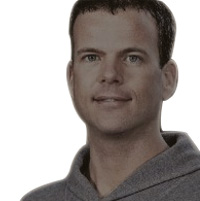
Friso Penninga is senior advisor Geo-information at Geonovum. He is co-lead of the Standardisation team at Geonovum and focussing on topics as 3D geo-information and the national spatial data infrastructure. Previously he worked as senior advisor Geo-information at the Municipality of The Hague on topics as 3D modelling, base registrations and open data and as an assistant professor in GIS at Delft University of Technology. Friso holds a PhD in 3D Topography from Delft University of Technology.
Abstract
Towards a national 3D data strategy
In the Netherlands, the Ministry of Infrastructure and the Environment and Geonovum are currently developing a national 3D strategy. This strategy aims to provide a solution towards the increasing demand for accurate and reliable 3D geo-information describing the physical environment. An important trigger in this increasing demand is the need to predict the impact of urban plans on the environment in terms of noise propagation, air quality, shadow analysis and so on. Currently only local initiatives on 3D modelling exist. From a perspective of the equality of rights however, the challenge is to provide coherent, accurate and reliable 3D geo-information on an national scale to all parties involved. In this presentation we will introduce the outlines of a national 3D strategy on 3D geo, including several issues related to the Geo – BIM integration / conversion.
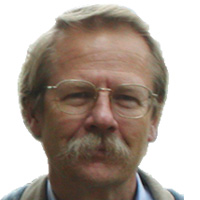
Geoff Zeiss has more than 20 years experience in the geospatial software industry working with utilities, communications, and public works in enterprise geospatial IT around the world. For eleven years Geoff was responsible for thought leadership, evangelization, and industry messaging for the utility industry program at Autodesk. In his early career, he was responsible for some of the largest successful implementations of location-aware enterprise design and records management software in the utility and telecommunications sectors. In 2004, he received one of ten annual global technology awards from Oracle Corporation for technical innovation and leadership in the use of Oracle. In recognition of his efforts to increase the awareness of geospatial data and technologies in utilities and construction, Geoff received the Geospatial Ambassador Award at Geospatial World Forum 2014 in Geneva, Switzerland. He has actively supported open standards and is a director of the Open Geospatial Consortium.
Abstract
Geospatial+BIM key to transforming construction to ensure resilience
It has been estimated that $90 trillion in investment is required for sustainable infrastructure (including buildings) over the next 15 years to ensure climate resilience. The IEA estimates that $45 trillion is required to migrate to a low-carbon energy infrastructure to contain warming below 2 degrees C and ensure resilience of our energy infrastructure. However, construction remains inefficient. If it is going to attract the private capital that is required construction productivity, which has lagged other industries, has to be radically improved. Improving productivity requires investment in technology. A new McKinsey report identifies geospatial technology and BIM as technologies that are essential for transforming the construction industry. Some of these key technology advances related to geospatial and BIM in construction will be reviewed including indoor navigation with SLAM, low cost imaging laser scanning, and ground penetrating radar and other technologies for underground remote sensing. Geocoordination, or georeferencing all objects related to a construction project, is key to full-lifecycle BIM which the UK government among others have targeted to reduce the cost of a building or infrastructure over its lifetime by 40% or more. Several projects using full-lifecycle BIM + geospatial will be discussed.

Graeme is a Chartered Civil Engineer by background and has been involved in the design and build of a wide variety of projects both in the UK and overseas. Since 1999 Graeme has been involved in running fully integrated design and build business units in major contractors across many different sectors. Graeme's exposure to the whole life delivery process and comfort with the better use of technology lead the development of BIM based tools from 2004. This has now culminated in the formation of Clearbox and the development of BIMXtra which he sees as part of the end game for real business transformation. With Clearbox, Graeme hopes to realise his vision for the application of new technology to overcome the issues he recalls vividly from his earlier experience in the whole design and build process, from the early days as a site engineer to more recent roles.
Abstract
Realising the benefits of integrating BIM with Geospatial information
Integrating the geospatial environment with BIM so that the two work seamlessly alongside each other is key. What we see and enquire upon, that may have come from BIM or Geospatial information, can be accessed and read alongside everything else, placing buildings in context, or making estates of buildings intelligent in content and interactive in location. However, the very nature of BIM viewing tools also brings real versatility as to how we handle Geospatial information which is then fed with various forms of building and topographical relief data to bring the data to life as a more interactive and accurate environment.
Of course, the opportunity of BIM and GIS brings with it performance risks. A complex set of BIM models needs to be married with the relative lightness of Geospatial information, just as the spread of key objects in a Geospatial environment may need to align with the concentrated richness of the BIM space. These issues represent a combination of a technical hurdle to overcome and an opportunity to be realised. The simplicity created by the sophistication of an integrated tool makes it easy to see an exciting and dynamic world in construction and asset management.
Clearbox has been active in this new digital space for a number of years and our team are now releasing an integrated Geospatial viewer providing BIM and Geospacial viewing in one integrated environment. Come and experience what this new world now looks like and make sure you are on the train before it leaves the station.

Guido Sabatini is an environmental engineer. In 2015, he joined the European Builders Confederation (EBC), the European trade association representing construction SMEs. He represents Small Business Standards (SBS), the representative organisation for SMEs in the standardisation field, in CEN Technical Committee 442 on Building Information Modelling. He also organised the 2016 EBC Annual Congress, which focussing on how to make sure SMEs can tap into the potential of BIM.
Abstract
BIM for SMEs: challenges and opportunities
With 92% of the EU construction sector made up of micro enterprises, responsible for 80% of the construction industry output, it is imperative that these players are not left behind in the definition and in reaping the benefits of Building Information Modelling (BIM). EBC works on how to make sure small and medium enterprises (SMEs) can tap into the potential of BIM with reference to training needs of construction entrepreneurs, its application to public procurement, small buildings renovation and retrofitting projects. The EBC Annual Congress of 2016, attended by more than 80 participants from all around Europe, discussed BIM challenges with experts, government representatives, industrial players and the European Commission and identified priorities for SMEs to be addressed also trough standardisation at European level.

Hans Viehmann is responsible for Oracle's Spatial and Graph technologies as well as Oracle Big Data Spatial and Graph as Director of Product Management. He studied Physics at Hamburg University and Imperial College, London, and started his career in Research with the prestigious Max Planck Gesellschaft before joining ORACLE over twenty years ago. He has been working on GIS Systems, Spatial Databases and Spatial Data Infrastructures since the mid-Nineties and turned Spatial and Graph database sales into a sustainable business for Oracle Germany over the following years. After various positions in Presales Management he joined the Product Management Team in 2011 and since then acts as the representative of the Oracle Spatial and Graph Development Team across Europe, Middle East and Africa. In this role he is responsible for key projects and strategic partnerships, marketing activities, as well as internal awareness around the Location Products within ORACLE's various regional organizations and business units. He also serves on the Advisory Board of InGeoForum, Germany
Abstract
IT Infrastructure for BIM and GIS – Best Practices from Across Europe
A key requirement for BIM is the integration of the CAD and GIS into a single framework. For this integration to be useable it is not sufficient to simply provide a shared storage, but it is necessary to build an IT infrastructure that has to fulfill a number of objectives. Besides offering an integrated information repository with common semantics it has to support automated workflows which can seamlessly deal with different kinds of 3D data and needs to make geospatial data available to a broad variety of client systems beyond CAD systems and GIS tools. This presentation looks at how various implementation projects across Europe have addressed these challenges. It will cover integration on different levels – data integration, process integration and application integration – and will briefly touch on the opportunities which cloud computing offers for such infrastructures.

Henk J. Scholten studied Mathematics and Geography at the VrijeUniversiteit Amsterdam and obtained his Ph.D. on the subject of models for housing allocation at the Faculty of Geography of the University of Utrecht (NL) in 1988. Since 1990 he is professor in Spatial Informatics at the Faculty of Economics of the VrijeUniversiteit Amsterdam and Director of the Spinlab (www.spinlab.vu.nl). Prof. Scholten is founder and CEO of Geodan, one of the largest European companies specialised in Geospatial Information Technology (www.geodan.nl). On Friday April 29th, 2005, Prof. Scholten received a Royal Decoration for his significant contribution to geo-information, both on a national and international level.

Dr Winkels is the current BIM program manager at Rijkswaterstaat, member of the National Council on BIM in the Netherlands and Chair of the European CEDR-group on BIM Information. He has a background of 26 years of experience at Rijkswaterstaat including Senior Advisor of the Board of Directors at Rijkswaterstaat, Management leader and expert in BIM-approaches, BIM-implementation, Assetmanagement and BIM-modelling.
Abstract
Dutch BIM Strategy 2020
During the last 5 years the Dutch Building Information council (BIR) cooperated on the BIM-topic; "BIM as motor for the Dutch building sector". Public Clients, Engineers, Architects, Contractors, Installation sector (HVAC) and Product Manufacturers worked closely together to improve cooperation and develop standard processes and open BIM-standards. Digitalization of the building industry has only just begun and BIM is part of the digital building process. BIM is not just 3D-modelling but it contains information needed for building processes and asset management. The National BIM Strategy 2020 contains: a. the increase of, use and adoption of these standards, b. a public client demand for use of these standards, c. the combination of these standards and Geo-standards in planning projects, (smart) city development and environmental studies and d. a crucial role of data and standard use in maintenance phase of buildings and infrastructure. International development on BIM-libraries and CEN/ISO-certification will diminish costs for the building industry sector and for all other stakeholders. This National BIM strategy 2020 will directly influence traffic achievements and behavior of building owners/users.

Ignacio Perez Arnal is the co-founder of WITS Institute (What Is The Situation Institute, 2013-present), which tries to understand what happens today to train and transform people. WITS has established different lines of work including BIM ACADEMY® to respond to an emerging demand for BIM (Building Information Modelling) engine in the actual and immediate future of the Construction Sector. He talks about himself as a Former Architect because the difficulty that has brought the traditional training in Architecture and the real needs of the market, the industry and the society. He began his BIM pathway in 2003 with "mebss project" -a modular, off-site, industrialized, bioclimatic and ecologic space- were put on sale as real estate product in Barcelona Meeting Point, a building fair. The compulsory use of advanced software as Bentley AECOsim, and after Catia 3D modeler –and Unix, Mountain Top… before- brings a different vision of what should be the process of design and construction. In 2012, he founded with Marc Binefa, BIM Academy, and create jointly with CAATEEB, the first international event in Europe about BIM, BIM Summit 2015. Now he is its contents director and member of its Strategic Committee, which has led him to be part of the Ambassadors Program of Catalonia Convention Bureau. Founder of ffwC, Fast Forward Building, a think tank about advanced building topics. Member of Linked Data Community Building Group, W3C: This group brings together experts in the area of building information modeling (BIM) and Web of Data to define existing and future technologies use, marry and link requirements for data based applications across the life cycle of buildings.

Dr Ilka May, Associate Director at Arup, is a senior consultant with more than fifteen years' experience working with spatial technology and data. She has worked with major clients on a range of prestigious projects, including London Olympics, Crossrail, Network Rail and Deutsche Bahn. In 2015 Ilka was appointed as interim chairwoman of the newly formed German initiative planen-bauen 4.0. In this role she led the development of a strategic BIM road map for Germany and was appointed as a consultant to the EU BIM Group in Brussels. Photograph attached, copyright ©arts4pr
Abstract
European public sector aims for world class construction sector
The economic benefits of digitalization are well recognized. The wider use of technology, digital processes, automation and higher-skilled workers contribute greatly to Europe's economic, social and environmental future. The European construction sector is undergoing its own digital revolution: Building Information Modelling (BIM) represents the construction sector's moment of digitalization. Since February 2016 Europe is host to the greatest regional concentration of government-led BIM programmes in the world. A newly formed "EU BIM Task Group", co-funded by the European Commission, has over 20 European member states with representatives of public procurers, public building and infrastructure owners and policy makers. It aims to bring together these national efforts into a common and aligned European approach to develop a world-class digital construction sector.
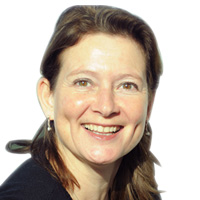
Ingeborg Ligtenberg is working for Rijkswaterstaat with responsibility for the road expansion project A6 Almere, which is part of the SAA (Schiphol-Amsterdam-Almere) Corridor program. Rijkswaterstaat is a Dutch governmental organization responsible for the execution of large civil infrastructure projects in the Netherlands.
Prior to joining Rijkswaterstaat in 2012 Ingeborg was responsible for several construction projects in the private sector at various locations around the world. Her experience includes managing a mine construction project for BHP Billiton in Suriname, South-America, the construction of several fuel outlets and maintenance projects in Africa for Shell. After graduating at the Delft University as a civil engineer Ingeborg started her career with the dredging contractor Boskalis.
Ingeborg is a strong, no-nonsense people manager and is always on the look-out for opportunities to optimize her projects, from a client perspective, and to strengthen the relationships with stakeholders and communities.
Results and experiences of BIM use in Large Project Schiphol Amsterdam Almere
As part of the BIM implementation program at Rijkswaterstaat, the Building Information model is part of the Design Build Finance and Maintenance contracts (DBFM) in the highway expansion program Schiphol-Amsterdam-Almere(SAA). The presentation gives an overview of BIM's development from the past, into the present and our expectations of the future.
The presentation is about my experiences with BIM and how it's managed from a project management point of view.
The Rijkswaterstaat board decided to: 'Start with BIM at 4 DBFM projects, and implement the BIMmodel in 2015 in all DBFM-contracts, Maintenance and planning phase projects'
- RWS believes that BIM will help us with our future need for information to become the number one assetmanager.
- Improve the reliability of information to support our operation.
- Information should be correct, current and complete.
The board believes that BIM must be part of the transition. Together with the industry and the 4 larger Rijkswaterstaat pilot project we have implemented the first step of BIM.
Two of the SAA projects where part of this pilot phase; the A1/A6 Diemen-Almere havendreef project and the A9 Holendrecht-Diemen tunnel project.
Using open BIM standards for all information delivery's was defining as one of the keys to success, for example the dutch COINS standard, or Visi. Another important approach was usage of standard products and a defined process.
I will elaborate the set-up and experiences at SAA in my presentation.
Enjoy, Ingeborg Ligtenberg

Jacqueline Meerkerk is director of the BIM Loket foundation. BIM Loket (BIM Gateway) aims at broader implementation of BIM in the Dutch building sector via open BIM standards. BIM Loket was founded in april 2015, in cooperation with knowledge institutes buildingSMART Benelux, CROW, Geonovum, SBRCurnet, STABU, S@les in de Bouw/ETIM and the Building Information Council (BIR). Jacqueline studied Geodesy at the Technical University in Delft and also Architecture (foundation course). She has worked as a director for the Dutch Innovation Programme Space for Geo-Information, where she created cooperation between government, academic and business in an (inter)national network. Since over six years she has been working succesfully as a businesswoman, serving clients via her own company on interim management. Jacqueline is a driving force to realize transitions in the field of (geo) information and the built environment, stimulating people to work together with a user-perspective.
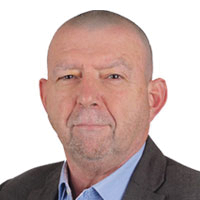
Jan Blaauboer is responsible for Bentley's Government solutions business in the European region. He joined Bentley in 2008, initially as sales director for civil and local government users in the Benelux countries. Prior to joining Bentley, Blaauboer was principal consultant with Capgemini, setting up compliance and quality management systems for clients throughout Europe. Blaauboer began his career as a surveyor for the City of Rotterdam in the Netherlands before joining Intergraph, where held several positions in product marketing and support. He was also responsible for setting up the MicroStation Reseller network in the Netherlands and Belgium in the late 1980s.
AbstractWhat is BIM to you?
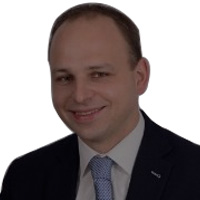
Jothijs is manager of the BIM programme of BAM Infra which is focused on achieving the Digital Construction 2020 goals of the Royal BAM Group. Also, he is responsible for an international team of modelers, multidisciplinary model administrators and BIM coordinators. His department operates mainly in the field of hydraulic and geotechnical structures such as tunnels, bridges, jetties, sluices and quay walls. The department is responsible for the BIM information delivery during the tender- and construction process.
Abstract
The challenge of adding useful geospatial context to our building information models
Jothijs will talk about BAM's 2020 vision of the digital construction process and where we're standing now in terms of integrating GIS- and BIM-standards in our daily workflow . Although spatial context of our designs can easily be provided by imagery, point clouds and public datasets, the integration of these datasets in our daily workflows is often still a struggle. Jothijs will show some practical project examples of how we overcome these struggles and how BAM is using the strengths of both the GIS- and the BIM-world to resolve complex design challenges
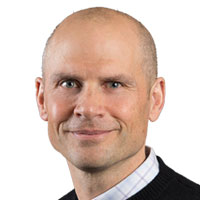
Ken Bragg is Safe Software's European Services Manager and a member of the Professional Services team. A certified FME Trainer & Professional, he provides assistance to partners and customers all over the world. Based in Annecy, France, Ken works closely with Safe's partner community to solve data interoperability challenges with FME.
Abstract
As facility projects move from design through construction, operations, and maintenance, ensuring asset data integrity can be a challenge. The ability to move data between software tools in BIM, CAD, and GIS without losing detail or accuracy becomes vital.
This presentation will discuss approaches to overcoming these data compatibility challenges while completing the asset information life cycle. The presenter will share his findings, showing real-life examples from his masters program research for Amsterdam Schiphol Airport, the primary international airport in the Netherlands.
Attendees will learn specific solutions to key problems such as moving information from 3D Modelling and Design software into GIS software, while handling different geometry representations, and maintaining semantic content.

Kjetil Tonning is President of the Technical Commission, and Vice-President of FIEC. He studied Civil and Structural Engineering (M.Sc.) and then Business Economics (BBA). He has more than 30 years of professional experience in leading positions in national and international construction companies and consulting engineer firms, as well as in the Norwegian army and public administration. He is currently area manager Heavy construction at Veidekke Entreprenør AS, Norway's largest construction company (6.400 operatives, 224 apprentices, 100 trainees). He has numerous honorary chairmanships and responsibilities in the Boards of regional, national and European companies and professional associations of contractors and consulting engineers.
Abstract
Is BIM for infrastructure lagging behind BIM for buildings in Europe?
Kjetil Tonning, Vice President of FIEC and also President of its Technical Commission, will present an overview of how BIM is being implemented in the 26 countries in which it has national member federations (23 EU & EFTA and Turkey). Some countries in Europe are already using BIM as the norm in their infrastructure contracts, while others are lagging behind. FIEC is aware that there is a big emphasis on BIM in the construction of buildings, whereas the discussion around infrastructure seems less intense by comparison. At the same time, some countries have national initiatives aimed at encouraging the industry to adopt BIM, ranging from awareness raising activities on the one hand to the mandatory use of BIM Level 2 in public works contracts on the other. Mr Tonning will share his experience of the current situation around Europe.

Kim Jung is a Civil Engineer (German Dipl. Engineer Construction) and a specialist in gamification and serious gaming in the fields of surveying, design, operational processes, asset management and maintenance. He gained his extensive experience in georeferenced and semantic modelling through over 2000 gamification projects and a number of computer games that he developed. Kim is the CEO of The Location Lab GmbH, a Germany-based company with over 90 staff, specialised in automated content creation and development of semantic 3D Models, programming and product development in all areas of the built environment. Since 2011 Kim has been advising DB Systel, the systems and technology branch of German Rail, in the development and roll-out of WorldInsight, a real-time-application for representing virtual models of the built environment. It is based on games-technology that is extended by two major columns of functionality: an automated production line and a network layer for process guidance.
Abstract
WorldInsight - Infrastructure and Asset Management in 3 dimensions at Deutsche Bahn
Gaming technology and especially the Gamification philosophy is currently seen as the most promising approach to BIM and asset management improvements. Most of the perceived technical issues when it comes to data capturing and visualisation of the built environment have been dealt with and solved for decades in the games industry. Game developers are very experienced in minimising data loads in order to save computer processing power for example. The aesthetic three-dimensional worlds used in computer games are easily digestible by processors and people alike. Games solutions will not only help to reduce data load in the CAD/BIM and asset management world. Hierarchy-based scene management using massive object and material libraries and object-detection algorithms are further examples of ready-to-use technology, that will revolutionise traditional design and data management processes in the construction industry. And on top of that, gamification brings one important facet to how we want to work in the future: Fun!

Between 2008 and 2016, Lars de Vries worked for the Dutch construction company Heijmans as a GIS consultant. He worked there on GIS, ETL and BIM projects for Heijmans and its clients. In 2013 he also successfully finished the MSc program Geographical Information Management and Applications. In 2016 Lars started working as an independent GIS and FME consultant. This year he worked for multiple construction companies, a Pipeline Management Organisation and a software supplier.
Abstract
Completing the Data Life Cycle from an Asset Management Perspective
As facility projects move from design through construction, operations, and maintenance, ensuring asset data integrity can be a challenge. The ability to move data between software tools in BIM, CAD, and GIS without losing detail or accuracy becomes vital.
This presentation will discuss approaches to overcoming these data compatibility challenges while completing the asset information life cycle. The presenter will share his findings, showing real-life examples from his masters program research for Amsterdam Schiphol Airport, the primary international airport in the Netherlands.
Attendees will learn specific solutions to key problems such as moving information from 3D Modelling and Design software into GIS software, while handling different geometry representations, and maintaining semantic content.
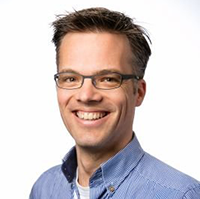
Maarten Veerman is a specialist in Building Information Management (BIM). His background in architecture and his knowledge of computer science gives him the ability to make complex building data transparent with 3D and 2D infographics. With these, he knows how to connect clients, designers, engineers and other stakeholders. Across the projects he works on, Maarten has the goal of capturing the data streams, then structuring, analysing and automating them to enhance the quality and efficiency of the job.
Abstract
The combination of BIM and GIS at Ring Antwerp
The focus of Witteveen + Bos in projects lays more in managing data more than ever. Maarten
Veerman will explain how the company applies these large amounts of data across its integrated
infrastructure projects. He will share his experience on how they collaborate with stakeholders
using 3D models, to provide maximum transparency across their large projects as Ring Antwerp.

Mark Noort is the director/owner of HCP international, specialising in marketing of earth observation applications for sustainable development and general project formulation, acquisition, management and evaluation. The activities of HCP international focus on marketing and business development in the areas of agriculture, risk, water and environmental management. Previously he was head of Marketing and Project Services at the International Institute for Geo-Information Science and Earth Observation (ITC) for more than 10 years. He is also involved in several European funded projects for the worldwide promotion of earth observation applications and is co-chair of the Institutions and Development Implementation Board of the Group on Earth Observations (GEO). For more than 25 years, he has managed and implemented projects in various fields, such as water management, natural resources, disaster management, agriculture, sanitation and marketing of higher education. Capacity building and fund raising are key elements in all these activities. He has vast international experience, also as an expatriate expert. He has been employed by NGOs, companies, governments and universities. He is a graduate of Wageningen University in the Netherlands.

Menno began his career at Arcadis with a research internship looking at the links between GIS, spatial information and Building Information Models. After a period of developing and maintaining software used for asset management, Menno is currently working on BIM solutions, used in infrastructure projects for clients such as Rijkswaterstaat (RWS) and the Municipality of Amsterdam. The main focus of his work is on developing and implementing semantic BIM models in order to efficiently exchange information between RWS and partners.
Abstract
Implementing national geo-standards within a BIM model
Rijkswaterstaat (RWS) is the Road and Waterway Authority of The Netherlands and responsible for the design, construction, management and maintenance of the main Dutch infrastructural facilities. This includes the main road network, the main waterway network and water systems.
The past few years RWS has been implementing BIM within the organization, focusing on the exchange of information between RWS and their contractors. An information model called an Object Type Library (OTL) has been developed, specifically for this purpose. The OTL combines organization specific requirements with sector requirements.
Currently the geo information requirements are being implemented in order to meet organizational needs and sectoral obligations. The challenge is to combine these inconsistent geo-information models into one consistent OTL structure. RWS has asked the consultancy firm Arcadis to assist them in this challenge. Arcadis, a design and consultancy firm on natural and built assets has the knowledge and experience with 30,000 employees worldwide, in delivering BIM, GIS and other Information Management solutions.
The primary goal of the RWS program is to allow GIS operations primarily focused on maintenance. This is based on one unique information source throughout the entire organization thus maximizing efficiency. In the future this scope can be widened to other applications such as network management.

Niall Gibson works as BDM for IES European Division. Niall studied Electrical & Mechanical Engineering at the University of Strathclyde in Glasgow before then studying an Msc Energy System in the Environment. Before joining IES in 2011 Niall worked in leading consultancies in the UK, Elementa Consulting, Ingenium Archial.
Abstract
Using BIM to close the performance gap
Increasingly the true value of BIM is becoming clearer to the industry, in that the ultimate outcome is not 3D CAD and coordinated services design, it's the creation, capture, analysis and sharing of information throughout design, construction and operation of an asset.
At the recent BRE/BuildingSMART BIM prospects event in London, AECOMs David Philp - a leading light in the implementation of the UK Governments BIM strategy, and member of the EU Bim Task Group, suggested that the Soft Landings framework coupled with the Government BIM strategy is a 'golden thread' linking data created during design with the operational phase of buildings. In order to better manage buildings with a view to reducing cost and carbon, we need to better understand their design intent and how they are being operated in reality. It is estimated that 80% of cost lies beyond the construction team involvement.
Historically it's been challenging to validate how buildings perform in real-terms, and to compare that with the expectation that may exist at the design stage. A very simple example of this is when we compare a buildings Energy Performance Certificate (EPC) against its energy bills and Display Energy Certificate (DEC). This has resulted in what many refer to as a Performance Gap. This paper will discuss the performance gap, where it comes from and how a BIM enabled process can help to close the gap.
Model Level of Detail (LOD) appropriate to the design stage is critical. The technology for this has been around for some time now and is continually evolving. Technology on its own does not provide a BIM solution. Process and the mind-set of people involved in the process needs to change in order to fully exploit a BIM enabled workflow. This is starting to happen more and more as the industry moves along the adoption curve.
This paper will aim to demonstrate how those that have a good understanding of the BIM process are having more success with BIM technology and Interoperability.

Nick has a background in project management and master's degree in Applied Project Management. In nearly 20 years of experience he has undertaken a variety of roles in both public and commercial sectors with organizations such as Fujitsu Services, Honeywell, British Petroleum, HMRC- Her Majesty's Revenue and Customs, Primavera Systems and Oracle.
He relishes the goals of enterprise project and portfolio management and thrives upon tackling the associated business challenges such as integration, adoption, compliance, visibility at both end user/recipient and Executive levels emphasizing "leave no one behind for successful project outcomes".
Most recently Nick has taken a lead role in developing the Oracle Primavera SMART City and Public Infrastructure Cloud Accelerators which aim to promote improved governance, projects controls and visibility across mega capital project portfolios at country and local levels for both developing and developed nations.
Nick lives in the UK with his wife and 2 children, has a passion for outdoor activities enjoying enduro motorcycling, running and soccer coaching. "
Abstract
The circular world of intelligent facilities and asset management
The technology is 21st century, the vision beyond - Our ability to better and more intelligently manage facilities and assets with vast quantities of informative data is surely easy? Not the case, the challenges of Portfolio management, balance of business drivers, rising costs, compliance often sometimes considered simple in isolation are hampering our efforts.
Then, overlay managing such challenges in an integrated and interconnected manner. This session looks at the critical importance of two factors - location data and BIM across the lifecycle in relation to the above challenges and some of the operational components such as:
• Space Demand and Capacity
• Capital Expansion
• Assets and Equipment
• Warranty Tracking
• Lease Administration
• Occupancy Rates
We close out with emphasis on two words- legacy and learning and why these are so important in the facilities and asset management lifecycle.

Niels Reyngoud has been working for the department of roads and traffic of the Province of Gelderland since 2010. In his job as information manager his main focus is to stimulate information in the asset management life cycle using (BIM) standards such as IMGeo, IMBOR, COINS and NEN2767-4. Currently he is the project leader fort the Gelderland 'Object Type Library' (OTL), he is working on the implementation of an integral maintenance management system and he is the information manager for three bypass (road) projects in Gelderland.
Abstract
Enhancing the asset management life cycle using BIM and GIS
Since 2011 the Province of Gelderland has made important steps to bring and keep its information
'household' regarding data of provincial roads and traffic up-to-date. By using open-BIM standards
the exchange of information between contractor, project organisation and maintenance organisation
is standardized. This further improves the quality of the information needed by the different steps
in the asset management process. In the presentation on the GeoBIM congress Niels will use one of the
road projects he is working on as example to demonstrate how its information life cycle is enhanced
by using IMGeo, NEN2767-4, the Gelderland 'Object Type Library' (OTL), IMBOR and COINS.
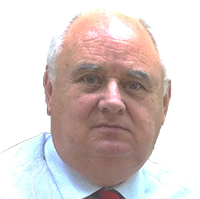
Phil is a Fellow of the Institution of Civil Engineers bringing many years of practical experience in design and construction to the deployment of Information Technology in Infrastructure Design, Construction and Operational Management. Whilst he is a Civil Engineer by training his background and experience has encompassed most aspects of the construction industry from buildings through infrastructure to asset management. After his early career in Highway and Bridge design and construction he moved on to use that practical experience by becoming director of information technology in a major international engineering consultancy for a number of years. He has worked at a senior level across the construction industry including large engineering consultants and was instrumental in setting up the principles of the project Common Data Environment that lie behind many of today's project collaboration standards. He joined Bentley Systems in 2002 initially directing professional services for the Civil Engineering team in EMEA. Later he moved to a role of strategic and project shaping consultancy for use of Information Management in major international projects. He now provides advice as a data strategist to a number of international clients and projects through his own independent consulting practice. He has a particular expertise in Systems Engineering Information Management, encompassing Building Information Modelling (BIM) & Geographic Information Systems (GIS), within projects helping to develop strategies, methodologies, protocols and processes that enhance collaboration across the project lifecycle. He was on the editorial panel for the UK Government BIM Strategy (2011 and was closely involved in the work packages delivering that Government BIM Strategy including the PAS 1192 BIM collaboration specification and the Data Management Work Package now being translated into ISO 19650. He has recently been appointed to the building Smart InfraRoom Steering Committee and is actively involved in the development of IFCs for infrastructure. He has been involved in applying Information Management on many major projects including the UK Channel Tunnel, Hong Kong's new airport, Heathrow Terminal 5, London Crossrail, Dubai Festival City, MASDAR City in Abu Dhabi, Expo 2015 in Milan, & recently the Oman Ministry of Transport data strategy. He has recently been appointed as a BIM Support Officer for Highways Agency as part of the UK Government rollout of their BIM strategy. His hobbies, when he gets the time, include photography, enjoying his grand children and refurbishing a farmhouse in the Dorset countryside.
Abstract
Fulfilling the Asset Information Lifecycle
Asset Managers BIM Information Requirements a Life Cycle View
Will look at how information collection during the Life Cycle of Assets provides quality information for the FM/Asset Manager. It will include what, when and how information should be delivered and how BIM can play an important role in capturing quality data. It will draw on the results of current buildingSmart Project capturing Asset Managers BIM Information Requirements where the author has been interviewing asset managers of a number of client organisations.

Rob van de Velde is director of Geonovum, the Dutch National SDI Executive Committee. Making the Government work smarter when it comes to location, is the common thread in his work in the public sector. Graduated as a human geographer, he started his career in geospatial technology when joining the National Planning Agency in 1985, the first Governmental Agency in the Netherlands to acquire GIS technology. Later he joined the National Institute of Public Health and Environment and in 2000 he joined the Ministry of Agriculture, Nature and Food Quality heading the GIS Competence Center. Since 2007 Rob is director of Geonovum. Rob is furthermore member of the Board of Directors of the Open Geospatial Consortium and is connected with the Spatial Information Laboratory of the Vrije Universiteit Amsterdam.
Abstract
Towards a national 3D data strategy
In the Netherlands, the Ministry of Infrastructure and the Environment and Geonovum are currently developing a national 3D strategy. This strategy aims to provide a solution towards the increasing demand for accurate and reliable 3D geo-information describing the physical environment. An important trigger in this increasing demand is the need to predict the impact of urban plans on the environment in terms of noise propagation, air quality, shadow analysis and so on. Currently only local initiatives on 3D modelling exist. From a perspective of the equality of rights however, the challenge is to provide coherent, accurate and reliable 3D geo-information on an national scale to all parties involved. In this presentation we will introduce the outlines of a national 3D strategy on 3D geo, including several issues related to the Geo – BIM integration / conversion.

Rombout Verwimp is general manager of Geo Solutions. He has over 15 years of expertise in bridging the gap between business, location based data and technology.
Nowadays he oversees a team of consultants focussing on solutions in three domains:
• data (iot, big data, BI, drones, BIM),
• tools & technology (solutions, IT experts)
• people (translating strategies of organisations in a location strategy, roadmaps, architecture plans...).
GEO-ICT technology trends are enabling new BIM application fields
BIM, Building Information Management, systems have gained importance over the last few years. The increased interest on BIM is not only through the evolution of traditional BIM software systems. More and more trends outside the BIM industry are interacting with the current BIM industry and are stimulating new applications fields of BIM data. This can drastically increase the ROI of BIM projects.
Typical sector based drivers for BIM are:
• The gaming industry is using more and more augmenthed or virtual reality to increase the user experience in games.
• Maintenance companies are interested in navigating from outdoor to indoor to direct their technicians faster to the equipment.
• Indoor spatial information and positioning is picked up more and more by hospitals to navigate their visitors easily or to track equipment.
• Where previously governmental business information in GIS systems was linked
Data trends that trigger BIM projects can be:
• In the field of GIS and Remote Sensing data derived from laser scanning through drones, airborn sensors. has become more and more available. These laser scans deliver point clouds that gives insight in the 3D geometry of buildings, furniture and even a view on as build large industry sites. These laserscanning is done both out- and inside.
• IoT sensors are somewhere in buildings or give information on infrastructure. As this sensors report on infrastructure more detailes information is required.
• Geographical analysis is more and more applied to 3D models of cities or environmental sites. Therefore 3D city and environmental models (LoD 1) are becomming area wide availalbe.
Technology trends
• Due to powerfull computing infrastructures the highly complex point cloud or 3D data processing becomes available. On the other hand
All these trends are interacting with each other and create many new opportunities to start with BIM or to integrate BIM within existing IT systems. It also increases the ROI on BIM as data is reused, is becoming master data. In this presentation we give an high level architectural framework on how these new opportunities can be used to strenghten each other.

Simon Navin MRICS MCInstCES is Project Lead within the Smart Practice at Ordnance Survey. He currently is responsible for the management, coordination and delivery of OS’s Smart/IoT sector projects including the UK’s key Internet of Things demonstrator project, CityVerve in Manchester. Simon began his career in the built environment in 1990 and has extensive experience in environmental management, planning, design, architectural visualisation and construction. He is a chartered surveyor and OS’s representative for Survey4BIM and a member of the CICES Anglia and Central Region committee.
Abstract
Towards a Digital Built Britain and beyond
During this session we’ll cover how we’ve supported BIM 2.0, and as the industry moves forward, share our vision for a Digital Built Britain, our role within that and an example of the projects we’re working on today, including the use of our data to facilitate the link to BIM and content and data interoperability in Smart and IoT.
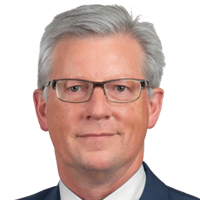
Ted Lamboo joined Bentley in 1994 and now leads the company’s global initiative to develop new markets and partnerships in the data capture of existing assets and infrastructure, leading to the availability and use of reality models in the as-built world. In his previously held positions with Bentley, he served as Bentley’s senior vice president, infrastructure owners, senior vice president of civil and geospatial global operations, senior vice president of international operations, president of Bentley Asia/Pacific, and vice president of sales for Bentley Europe, Middle East, and Africa. Prior to joining Bentley, Ted served for 13 years at Intergraph Europe, the European headquarters of Intergraph Corporation. He holds a degree in geodetic engineering from the University of Utrecht in the Netherlands and several post-graduate diplomas in computer engineering and development.
Abstract
City Planning in context to its current Reality
Cities are vibrant and constantly changing. Living space and work are competing for space and for the ability for people to move around. This presentation will address how the reality of the city infrastructure of today will be taken in to account with the space planning requirements of tomorrow.

Ted Lamboo joined Bentley in 1994 and now leads the company’s global initiative to develop new markets and partnerships in the data capture of existing assets and infrastructure, leading to the availability and use of reality models in the as-built world. In his previously held positions with Bentley, he served as Bentley’s senior vice president, infrastructure owners, senior vice president of civil and geospatial global operations, senior vice president of international operations, president of Bentley Asia/Pacific, and vice president of sales for Bentley Europe, Middle East, and Africa. Prior to joining Bentley, Ted served for 13 years at Intergraph Europe, the European headquarters of Intergraph Corporation. He holds a degree in geodetic engineering from the University of Utrecht in the Netherlands and several post-graduate diplomas in computer engineering and development.
Abstract
Leveraging spatial to address complex Construction challenges
The world’s infrastructure is continuously becoming more complex and dense, resulting in Construction complexities in ever more sophisticated surroundings with higher level requirements. The speaker will share how BIM is supporting the process
during design, construction and usage of the infrastructure of the future
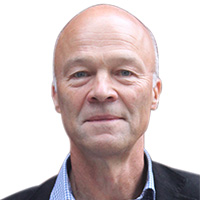
Professor of IT in Construction at KTH, the Royal Institute of Technology since 2011, has an educational background of BIM at master’s level with a long experience in information modelling, implementation and use in the construction industry. Also lifecycle information management, PDM and collaboration for the built environment are his key areas of interest and research.
Abstract
BIM and GIS standardisation and implementation in Sweden with a through life perspective
The presentation “BIM and GIS standardisation and implementation in Sweden with a through life perspective” looks at the current state in Sweden regarding BIM and GIS over the life cycles of planning and building construction processes for the Built Environment.
The use of BIM and GIS is well integrated in today’s Swedish construction industry – but kept well separated. With the new organization BIM Alliance Sweden, the governance of standards development and deployment in the industry is managed in a new and focused way. This work is now strongly supported by the new 3 year Governmental R&D programme “Smart Built Environment” where the state is funding 10 million € and the industry the same for integration of BIM and GIS in the planning and construction processes with the aim of open, unbroken information flows based on open, neutral and international standards.
The program started last year and now the first results are coming, as well as calls for Test beds, where standards and processes are to be tested. One of them, the “Smart Planning, Construction, Maintenance and Usage processes over the whole life cycle” aims to support the development and testing of information integration, sharing and exchange through life.
Copyright@geospatialmedia